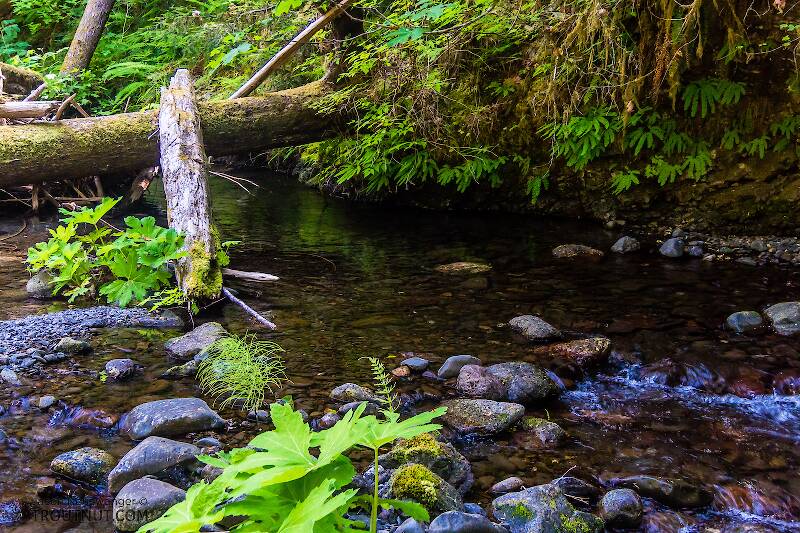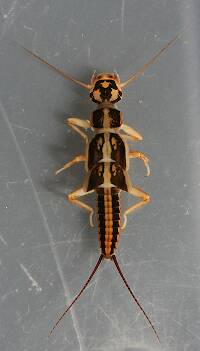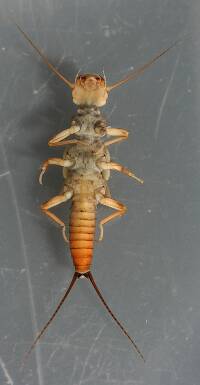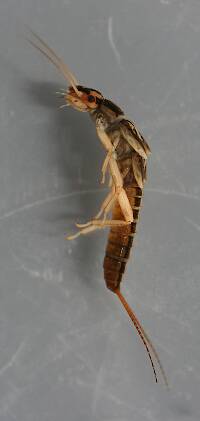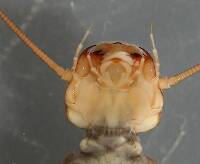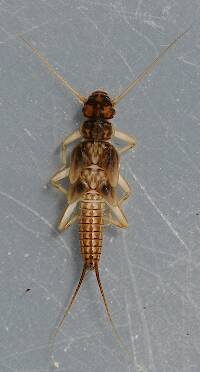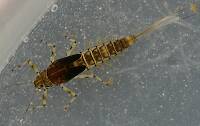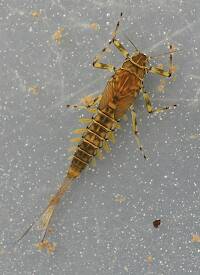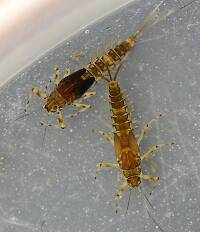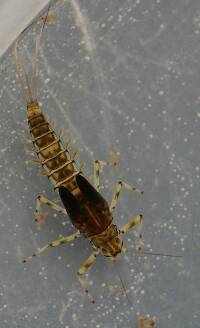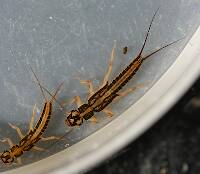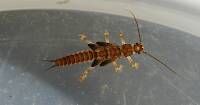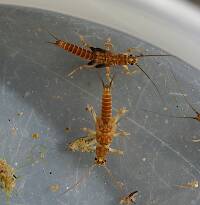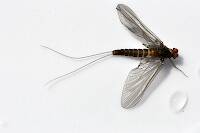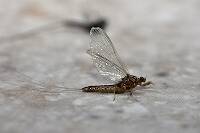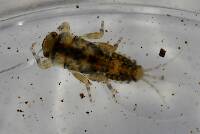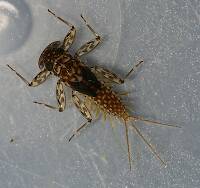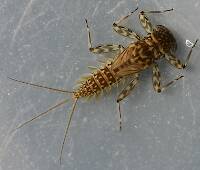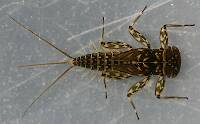
Salmonflies
Pteronarcys californica
The giant Salmonflies of the Western mountains are legendary for their proclivity to elicit consistent dry-fly action and ferocious strikes.
Featured on the forum

This dun emerged from a mature nymph on my desk. Unfortunately its wings didn't perfectly dry out.

Troutnut is a project started in 2003 by salmonid ecologist Jason "Troutnut" Neuswanger to help anglers and
fly tyers unabashedly embrace the entomological side of the sport. Learn more about Troutnut or
support the project for an enhanced experience here.
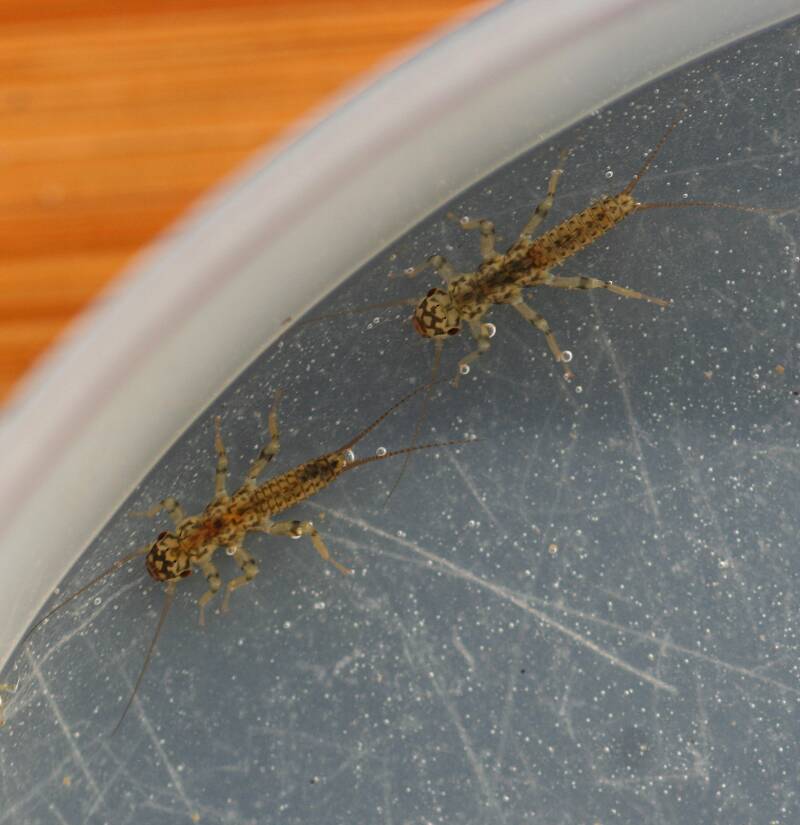
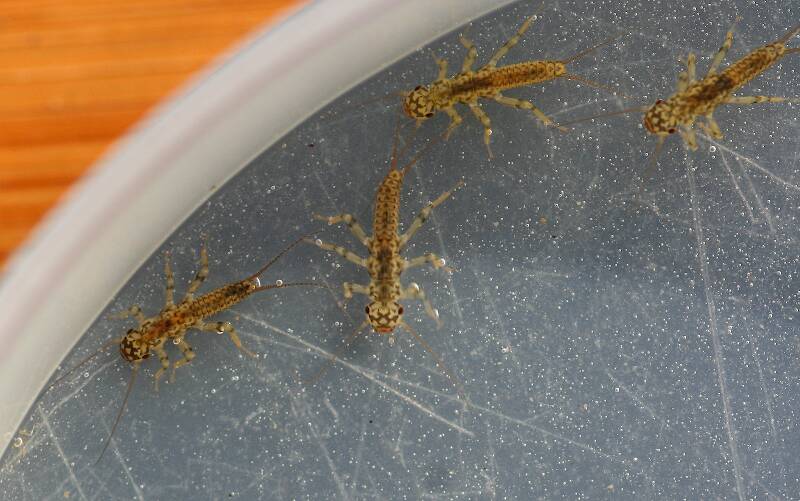
Millcreek on Nov 26, 2016November 26th, 2016, 11:25 am EST
These nymphs were identified using "The Isoperla of California (Plecoptera; Perlodidae); Larval Descriptions and a Key to 17 Western Nearctic Species" by John B. Sandberg. http://www2.pms-lj.si/illiesia/papers/Illiesia07-22.pdf
The nymphs are approximately 7mm in length excluding cerci and antennae. This is less than the size given in the article but these are early instars.
They were collected on November 24th, 2016 from the Russian River. They were collected in about 16 inches of water in glides with a bottom of gravel and cobble.
The nymphs are approximately 7mm in length excluding cerci and antennae. This is less than the size given in the article but these are early instars.
They were collected on November 24th, 2016 from the Russian River. They were collected in about 16 inches of water in glides with a bottom of gravel and cobble.
"If we knew what it was we were doing, it would not be called research, would it?"
-Albert Einstein
-Albert Einstein
PaulRoberts on Nov 28, 2016November 28th, 2016, 3:10 am EST
Very pretty critters!
Jmd123 on Nov 28, 2016November 28th, 2016, 10:13 am EST
I agree with Paul - stoneflies seem to be the most colorful of the aquatic nymphs. Of course, somebody on here (Eric or Roger?) will show me a colorful mayfly nymph or caddis larva I wasn't aware of...
Jonathon
Jonathon
No matter how big the one you just caught is, there's always a bigger one out there somewhere...
Oldredbarn on Dec 5, 2016December 5th, 2016, 1:32 pm EST
Yes...to all, but to me its all about camouflage! It is incredible how gaudy they may look in a petri dish, but they probably disappear on the bottom of the stream...
A month or so back I was watching ducks on a forested pond out by Jackson Michigan. It was chaos! There were geese and ducks everywhere...Migration was in its early stages.
I had my binocs and I was scanning the surface and there was a male Wood duck in all his glory...One of natures show-offs. He had nearly disappeared on the surface as he glided across the pond trying to get away from me. Somehow his coloration blended in with the reflections on the pond...Autumn leaves etc...
It was an eye opener for me.
Maybe he looks just right to the females, or maybe that color combo helps him blend in and survive. Just right for a bird that hangs out in a forest.
A month or so back I was watching ducks on a forested pond out by Jackson Michigan. It was chaos! There were geese and ducks everywhere...Migration was in its early stages.
I had my binocs and I was scanning the surface and there was a male Wood duck in all his glory...One of natures show-offs. He had nearly disappeared on the surface as he glided across the pond trying to get away from me. Somehow his coloration blended in with the reflections on the pond...Autumn leaves etc...
It was an eye opener for me.
Maybe he looks just right to the females, or maybe that color combo helps him blend in and survive. Just right for a bird that hangs out in a forest.
"Even when my best efforts fail it's a satisfying challenge, and that, after all, is the essence of fly fishing." -Chauncy Lively
"Envy not the man who lives beside the river, but the man the river flows through." Joseph T Heywood
"Envy not the man who lives beside the river, but the man the river flows through." Joseph T Heywood
PaulRoberts on Dec 6, 2016December 6th, 2016, 3:05 am EST
Those little buggers are cute! I bet their mama's and papa's think so too. And I bet the trout even give em a pass. How could they not? In fact I've never caught a trout on a super-realistic baby Isoerla imitation. Don't even carry one. Bet you don't either.
I bet it's the same for male woodducks. Ever seen a goshawk snatch one out of the air in front of you? I haven't. Bet you haven't either.
Actually, it's probably not about camo, or at least mostly so. It's all show, and likely at some higher risk. The hens show us what a woodduck, or mallard, looks like when it needs camo. Note too that drakes lose some of that finery outside the breeding season. Woodies are spooky things though, and at a distance they all look sooty and fly "under the radar" -low and fast and prefer to stick to cover. One really has to get close to fully appreciate a male woody.
I bet it's the same for male woodducks. Ever seen a goshawk snatch one out of the air in front of you? I haven't. Bet you haven't either.
Actually, it's probably not about camo, or at least mostly so. It's all show, and likely at some higher risk. The hens show us what a woodduck, or mallard, looks like when it needs camo. Note too that drakes lose some of that finery outside the breeding season. Woodies are spooky things though, and at a distance they all look sooty and fly "under the radar" -low and fast and prefer to stick to cover. One really has to get close to fully appreciate a male woody.
Quick Reply
Related Discussions
Topic
Replies
Last Reply
0
Feb 21, 2018
by Millcreek
by Millcreek
10
Dec 18, 2013
by Brookyman
by Brookyman
4
Sep 27, 2014
by Millcreek
by Millcreek

